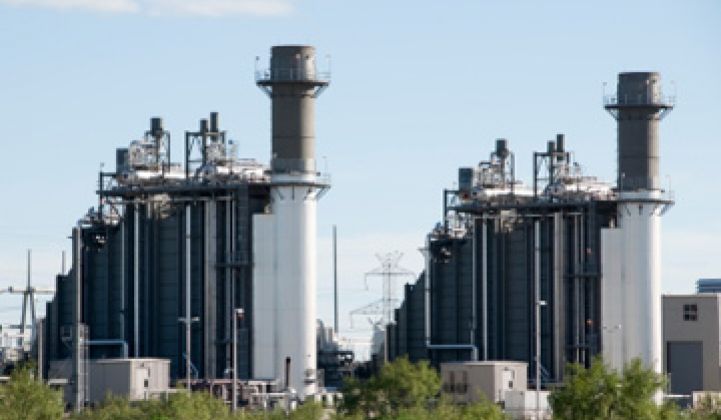The White House signed an executive order on Thursday calling for an additional 40 gigawatts of combined heat and power systems by 2020.
The order will provide incentives for industrial facilities to deploy CHP, also known as cogeneration, and waste heat recovery technology, and will also expand the Better Buildings, Better Plants program at the Department of Energy. Combined heat and power systems recover wasted heat and reuse it as electricity in a single, closed system.
The feds will also work with states to define and spread best practices and investment models that break down the barriers to investment in industrial energy efficiency.
Energy efficiency, which is the least visible -- and arguably, the least sexy -- aspect of the cleantech sector, soldiers on despite political upheaval and investor pullback. There is actually broad support for many energy efficiency policies.
“Industrial energy efficiency is a pragmatic policy with broad support from members of both political parties,” Phyllis Cuttino, director of the Pew Clean Energy Program, said in a statement. “Combined heat and power and waste heat recovery are deployed throughout the country, with the largest concentration of installed capacity located in Texas, California, Louisiana, and New York.”
Earlier this week, Obama also enacted new fuel efficiency standards. While the new executive order is not a standard, unlocking additional CHP could have a significant effect on energy use in the U.S. Industrial power use accounts for more than 30 percent of all energy consumed in the U.S. Currently, there are about 80 gigawatts of CHP installed in the U.S., according to the U.S. Clean Heat & Power Association, a trade group.
There is a technical potential for about 130 gigawatts, plus another 10 gigawatts of waste heat recovery, according to the U.S. Clean Heat & Power Association, which praised Obama's order. “Most of these efficient technologies are made right here in the U.S.,” the group said in a statement.
Increasing efficiency in some of the biggest power hogs in the U.S., whether in transportation or industry, could likely be Obama's most significant achievement in sustainability. There have also been waves of other efficiency standards that have been finalized during his time in office, for everything from washing machines to set-top boxes.
Tackling wasted energy in industrial plants is hardly a new topic for the Department of Energy. Four years ago, a report from the DOE found that about 9 percent of factories use combined heat and power, which saved the country 1.9 quadrillion BTUs of fuel, or about 2 percent of total energy use in the U.S. -- the equivalent of what all of the data centers in the U.S. consume. The study noted that if 20 percent of the facilities installed CHP by 2030, the savings would be the equivalent of the power used by half the households in the U.S. The General Services Administration is also investigating whether more of its buildings could benefit from CHP.
Among the issues with CHP, according to the American Council for an Energy-Efficient Economy, are a lack of net metering standards and standards for interconnection with the grid, discriminatory utility rates and emission regulations that don't recognize the benefits of CHP.
Although the order directly addressed some of the challenges, such as the emissions regulations, the little issue of dealing with utility regulations across 50 states was not directly addressed. Without the incentives for utilities to work with some of their largest customers to cut their power use, the result will likely be a patchwork of winners and losers, with decoupled states likely being quicker to embrace the opportunities for CHP that could come from this order. The White House estimates the order could lead to up to $100 billion in investment, which the government will encourage manufacturers to make here.
There is some hope however, as ACEEE noted, that the National Association of Regulatory Utility Commissioners has standards on the books that are favorable to CHP and could be implemented at a state and utility level.
Reining in industrial energy use is far easier than trying to achieve significant drops in home energy use, as big industries are far more rational in their bottom-line approach to energy than a home filled with fickle people who own an ever-increasing amount of gadgetry.
According to the ACEEE, most of the CHP already deployed is in steel, chemical, paper and petroleum-refining industries, and also at some large institutional campuses. More recently, smaller systems have started to make their way into light manufacturing, commercial buildings and smaller institutions, such as hospitals.
FlexEnergy is just one small company that could benefit from the push for more CHP. It has a flexible microturbine that can run off of everything from natural gas to methane. Other startups, such as Phononic Devices, Alphabet Energy and Echogen Power Systems, are also looking at novel approaches to waste heat recovery for the industrial sector.
And of course, the big boys, like Siemens and General Electric, will also welcome this opportunity to sell more of their cogeneration products. The question now is if the working groups can garner the kind of support for carrying this out that they did with fuel economy standards.



